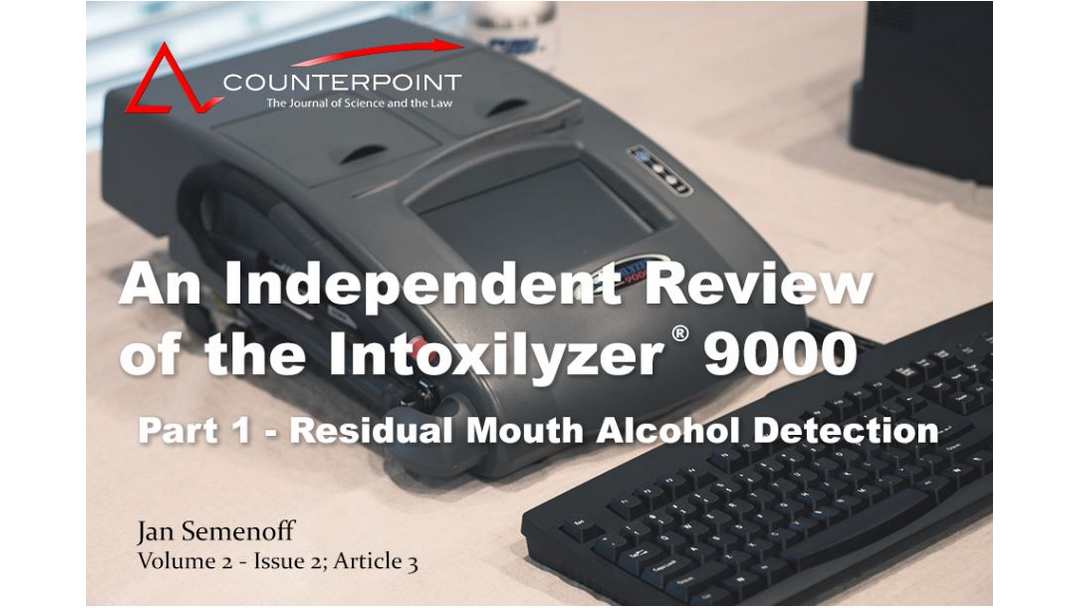An Independent Review of the Intoxilyzer 9000
Part 1 – Residual mouth alcohol detection
Counterpoint Volume 2; Issue 2 – Article 3 (August 2017)
An article in the Core Skills III-2 Module
Jan Semenoff, BA, EMA
Forensic Criminalist
The opportunity to conduct an independent analysis and performance review of a new breath alcohol testing device is rare, particularly the higher-end, evidentiary-level units.
Access to these technologies is stringently controlled by both their manufacturers and the police and government agencies that control them.
Additionally, state agencies are often reluctant to publish the results of their official assessments and analysis of the devices.
When given the opportunity to perform such a review on a new Intoxilyzer 9000, I designed a series of experiments to quickly analyze the overall performance of the device.
I attended the device’s location with colleague Tom Workman (1948 – 2019) to determine its suitability and reliability in a number of key areas, including:
- Overall design and ease of use
- Accuracy in determining in vitro [2] BrAC levels using a simulator
- The ability of the device to determine the presence of Fresh Mouth Alcohol using a Residual
- Alcohol Detection System (RADS) or the so-called “slope detector”.
- Reliability in reporting BrAC [3] readings that are highly specific to ethanol
- The effect of Radio Frequency Interference on the device [4]
This article will provide a general overview of the operational characteristics of the Intoxilyzer 9000. We will additionally look at the apparent accuracy of the device using simulator readings, and examine the ability of the device to “flag” false positive reading caused by fresh mouth alcohol contamination.
Read the rest of Part One here
Parts two and three are in the drop down menu at the site but not easy to notice. The links are below if you have trouble.
Part Two and Part Three will examine the unit’s specificity towards ethanol detection and its ability to identify the presence of an interferent chemical, and the capacity of the device to detect Radio Frequency Interference.
Related Articles
No Results Found
The page you requested could not be found. Try refining your search, or use the navigation above to locate the post.
More Posts
No Results Found
The page you requested could not be found. Try refining your search, or use the navigation above to locate the post.






